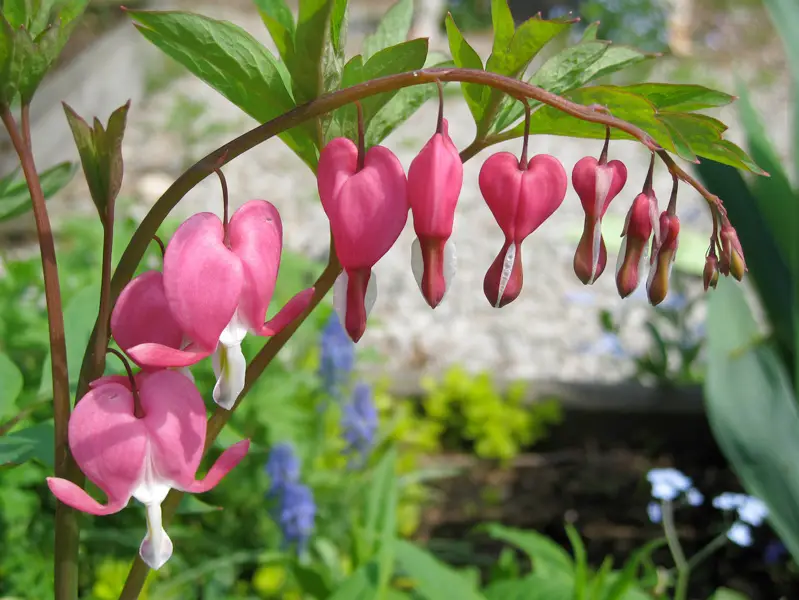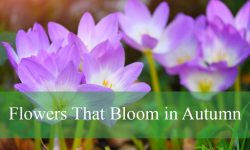The Bleeding Heart Flower (Lamprocapnos spectabilis), with its striking heart-shaped blooms, is a beloved plant in gardens around the world. Native to Asia, this perennial flower is known for its delicate, puffy pink flowers that hang gracefully from arching stems. Each blossom resembles a heart, complete with a white teardrop petal beneath it, which creates a stunning visual.
In this comprehensive guide, we’ll explore everything you need to know about growing and caring for bleeding hearts, from planting tips to common problems and solutions.
Understanding the Bleeding Heart Flower

Plant Profile
- Common Name: Bleeding Heart, Common Bleeding Heart
- Botanical Name: Lamprocapnos spectabilis (formerly Dicentra spectabilis)
- Family: Papaveraceae (Poppy Family)
- Plant Type: Perennial, herbaceous
- Mature Size: 1-3 ft tall, 2-3 ft wide
- Sun Exposure: Partial to full shade
- Soil Type: Moist, well-draining, rich in organic matter
- Soil pH: Slightly acidic to neutral (6.0-7.0)
- Bloom Time: Spring
- Flower Color: Pink, white, red
- Hardiness Zones: USDA zones 3-9
- Native Areas: Asia
- Toxicity: Toxic to humans and pets
Unique Characteristics
The bleeding heart plant grows up to 3 feet tall and spreads up to 3 feet wide. During spring, it produces clusters of small heart-shaped flowers along its stems, each bloom lasting several weeks. While it may go dormant during the summer, it re-emerges in the fall or the following spring. This plant shares a family with poppies, and like many plants in this family, it is toxic if ingested by humans or animals.
Bleeding Heart Flower Care
Ideal Growing Conditions
Light Requirements
The bleeding heart thrives best in environments with partial to full shade, making it ideal for shady corners of your garden or beneath taller plants that can provide cover. While the bleeding heart can tolerate some exposure to morning sunlight, too much direct sun, especially during the heat of the day, can cause the plant to go dormant prematurely, reducing its blooming period.
This makes shaded spots or woodland garden areas perfect for cultivating a healthy bleeding heart. If you’re planting it in a location that receives some sunlight, ensure it’s morning light, as the harsh afternoon sun may cause stress, yellowing leaves, and early dormancy.
Shaded borders, especially with good air circulation, are excellent choices to maintain the plant’s natural beauty and ensure vibrant blooms year after year.
Soil Requirements
The bleeding heart prefers well-draining soil that is rich in organic material to thrive. A humus-rich, slightly acidic to neutral soil is ideal for supporting its growth and blooming potential. If your garden soil is lacking in nutrients, it’s beneficial to work compost or other organic matter into the planting area to improve its quality and nutrient content.
Proper drainage is critical for the bleeding heart, as overly wet soil can cause root rot, which may damage or kill the plant. Ensuring your soil maintains moisture without becoming waterlogged is the best way to keep this delicate plant healthy and flourishing.
Watering Needs
The bleeding heart requires consistently moist soil, but it’s essential to avoid waterlogged conditions. This plant does not tolerate soggy environments and may develop root rot if overwater. During the growing season, make sure to water the plant when the top inch of soil feels dry, ensuring that the roots remain hydrated without becoming oversaturated.
Even during dormancy, it’s important to continue watering the bleeding heart to prevent dehydration. Regular moisture helps maintain the plant’s health, ensuring it comes back strong in the next growing season.
Temperature and Humidity
The bleeding heart flourishes in temperatures ranging from 55°F to 75°F, making it well-suited to mild climates. It can tolerate higher humidity levels, which are typical in its natural woodland habitats. However, during the hot summer months, the plant’s foliage may turn yellow as it enters dormancy.
This yellowing is a normal part of the bleeding heart’s lifecycle, allowing it to conserve energy and prepare for the next growing season. Despite its tolerance for heat, providing a cooler, shaded environment can help prolong its blooming period and maintain its vibrant foliage longer.
Fertilization
The bleeding heart is not a heavy feeder and typically thrives without much additional fertilization if grown in nutrient-rich soil. In such conditions, fertilization may not be necessary at all. However, in poorer soils, applying a slow-release, all-purpose fertilizer in the spring can help support the plant’s growth and blooming.
Alternatively, adding a layer of leaf mold or compost around the plant will naturally enrich the soil, providing ample nutrients without the need for synthetic fertilizers. This organic approach is ideal for maintaining the health and vigor of the bleeding heart throughout the growing season.
Planting Bleeding Heart
When planting the bleeding heart, it’s important to position the roots in the ground with the crown about 1 to 2 inches below the soil surface. Take care not to plant too deeply, as this can lead to crown rot, which jeopardizes the plant’s health.
Choose a location that provides protection from strong winds, as the delicate stems of the bleeding heart are susceptible to snapping in gusty conditions. Ideal planting spots include shaded garden corners or areas near taller plants that can act as a windbreak. This strategic placement will help ensure the plant remains healthy and can flourish in its new environment.
Pruning and Maintenance
Pruning is not essential for the bleeding heart, but trimming back any yellowing or browning foliage in late summer can help maintain a tidy appearance as the plant prepares for dormancy. This simple maintenance task can enhance the overall look of your garden.
It’s important to refrain from deadheading the spent flowers unless you specifically want to prevent self-seeding. Allowing the bleeding heart to go to seed can promote natural propagation, enabling the plant to spread and thrive in your garden organically.
Overwintering
As the bleeding heart naturally dies back in the winter, it’s advisable to cut the stems down to about 1-2 inches above the soil. This helps prepare the plant for dormancy while ensuring the roots remain protected.
To safeguard the roots and retain moisture during the colder months, apply a 2-inch layer of mulch around the base of the plant. This insulating layer helps protect against temperature fluctuations and dehydration. Be sure to remove the mulch in early spring as the ground begins to thaw, allowing the plant to emerge and thrive once the warmer weather returns. This overwintering process is crucial for maintaining the health and vitality of your bleeding heart for the next growing season.
Propagating Bleeding Heart
You can propagate bleeding hearts by division, cuttings, or seeds.
Propagation by Division
- In early spring or after the plant has gone dormant, carefully dig up the root ball.
- Divide the plant by cutting the roots, ensuring each section has at least one or two growth buds.
- Replant the divisions immediately in well-draining soil, and water thoroughly.
Propagation by Cuttings
- In spring, take a 3-5 inch cutting from a healthy stem.
- Remove the leaves from the lower half of the cutting and dip the end in rooting hormone.
- Plant the cutting in a pot filled with well-draining soil, and cover it with a plastic bag to maintain humidity.
- Once the cutting has rooted and new growth appears, transplant it outdoors.
Propagation by Seeds
- To start seeds indoors, place them in moist soil in a pot, then refrigerate for 6-8 weeks to mimic winter conditions.
- After this period, move the pot to a warmer, light-filled location to encourage germination.
Common Pests and Diseases
While bleeding hearts are generally low-maintenance, they are susceptible to pests and diseases:
Pests
- Aphids and scale: Can be treated with insecticidal soap or neem oil.
- Slugs and snails: Handpick these pests from your plants or set traps to catch them.
Diseases
- Powdery mildew and leaf spot: Treat with a fungicide if these fungal infections appear.
- Root rot: Prevent this issue by ensuring your soil is well-draining and not waterlogged.
How to Encourage Blooming
Bleeding hearts typically bloom in spring and continue to produce flowers until early summer. To prolong the blooming period, it’s essential to ensure that the plant is not exposed to direct sunlight for extended periods and that it receives consistent watering.
If the bleeding heart becomes crowded, dividing the plant can provide it with more space to grow, encouraging healthier blooms. Additionally, cutting the plant back to the ground after its initial bloom can stimulate a second bloom later in the season. By following these practices, you can help your bleeding heart thrive and maximize its beautiful floral display throughout its growing season.
Popular Bleeding Heart Varieties
There are several cultivars of the bleeding heart, each offering unique characteristics:
- Lamprocapnos spectabilis ‘Alba’: Features pure white flowers.
- Lamprocapnos spectabilis ‘Gold Heart’: Known for its pink flowers and striking yellow-gold foliage.
- Lamprocapnos spectabilis ‘Valentine’: Showcases vibrant red flowers with white tips.
- Dicentra spectabilis ‘White Gold’: An elegant variety with bright white flowers and chartreuse leaves.
- Dicentra spectabilis ‘Ruby Gold’: Produces golden foliage and ruby-red blooms.
Conclusion
The bleeding heart flower is a stunning addition to any garden, with its beautiful heart-shaped blooms and graceful arching stems. With proper care, it can thrive in shaded areas, providing years of beauty. Whether you’re a novice gardener or an experienced green thumb, following the ultimate tips in this guide will ensure your bleeding heart plants grow healthy and strong. Embrace the timeless charm of this plant and watch your garden transform into a serene, vibrant space each spring!






